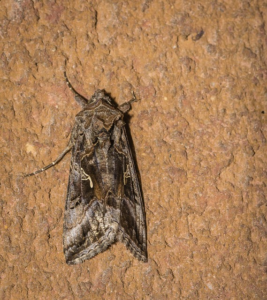Seasonal Rodent Traps & Baits: Effective Control for Tucson Homes
In Tucson's Catalina Foothills, understanding seasonal rodent behavior is crucial for effective…….

In Tucson's Catalina Foothills, understanding seasonal rodent behavior is crucial for effective pest management. Rodents are attracted to food and shelter, with mild winters and vegetation providing ideal habitats year-round. Adapting control methods based on seasonality includes strategic placement of baits and traps. Using locally relevant baits, specific trap designs, and rotating locations prevents resistance. Compliance with local regulations, safety precautions, and responsible practices ensure effective yet humane rodent control Tucson solutions while maintaining a secure living environment. Proactive measures like clutter reduction, cleaning, sealing entry points, landscape modification, and monitoring provide sustainable year-round protection from rodents in Tucson.
In the vibrant, diverse landscape of Catalina Foothills, Tucson residents face unique challenges in managing seasonal rodents. Understanding how these creatures adapt to the region’s climate is paramount for effective rodent control. This guide delves into the intricacies of both traps and baits, offering strategic insights for seasonal use. From choosing the right equipment based on weather patterns to legal considerations and year-round preventive measures, we equip Tucson homeowners with essential tools in their rodent control arsenal.
- Understanding Rodent Behavior in the Catalina Foothills Climate
- Choosing the Right Traps for Seasonal Effectiveness
- Effective Baits and Their Application Strategies
- Legal and Safety Considerations for Homeowners
- Preventive Measures: Year-Round Rodent Control Tips for Tucson Residents
Understanding Rodent Behavior in the Catalina Foothills Climate

In the Catalina Foothills, understanding rodent behavior is key for effective rodent control Tucson strategies. Rodents like mice and rats are drawn to areas with readily available food and shelter, especially during seasonal changes when resources can become scarce. The climate’s unique features, including mild winters and abundant vegetation, create habitats that attract these pests year-round.
During the cooler months, rodents might seek refuge in homes and structures for warmth, while warmer seasons see them actively feeding and reproducing. This variability in behavior makes it crucial to adapt rodent control methods accordingly. Using this knowledge, homeowners and professionals can strategically place baits and traps, taking advantage of seasonal patterns to disrupt rodent populations effectively.
Choosing the Right Traps for Seasonal Effectiveness

When it comes to effective rodent control in Tucson’s Catalina Foothills, selecting the appropriate traps and baits tailored to seasonal changes is key. The climate’s fluctuations significantly impact rodent behavior, making a strategic approach essential for successful rodent control. During cooler months, rodents tend to seek warmer environments, so placing traps near heat sources or in protected areas with potential shelter can increase catch rates. Alternatively, in the warmer seasons, rodents may be more active during the night, suggesting the use of light-sensitive traps for optimal results.
For efficient rodent control Tucson residents should consider the following: baits that match the seasonal preferences of local rodent species and traps designed for specific behaviors. For instance, peanut butter or seeds can act as effective year-round baits, while seasonal variations in trap design, such as adjustable triggers, allow for a better fit with changing rodent activities. This tailored approach ensures that traps remain active during peak rodent activity periods, enhancing the overall effectiveness of rodent control efforts.
Effective Baits and Their Application Strategies

When it comes to effective rodent control in Tucson’s Catalina Foothills, understanding the right baits and application strategies is key. Rodents are attracted to a variety of natural and synthetic substances, but not all attractants work equally well in every environment. For instance, during the cooler months, foods high in fat and calories become more appealing, while in warmer seasons, sweet or protein-rich baits might be preferred.
Application strategies should consider the specific habitat and behavior of target rodents. In residential areas, placing baits near walls, under debris, or in other hidden spots can be effective. For larger properties, trapping and baiting stations at entry points, around structures, and along fence lines may be more suitable. Regularly rotating bait locations and types helps prevent rodent populations from becoming accustomed to a single food source, enhancing the effectiveness of rodent control efforts in Tucson’s diverse climate.
Legal and Safety Considerations for Homeowners

When considering rodent control in Tucson’s Catalina Foothills, homeowners must navigate legal and safety considerations to ensure effective and responsible pest management. It is crucial to familiarize oneself with local regulations regarding the use of traps and baits. Both city and state laws often dictate specific types, placement, and handling procedures for these tools, particularly in residential areas.
Safety is paramount, as improper use can pose risks to pets, children, and the environment. Homeowners should opt for licensed professionals or follow guidelines from reputable sources for setting traps and applying baits. This includes understanding toxicants and their potential impacts, choosing humane traps where possible, and ensuring proper disposal of captured rodents to prevent the spread of diseases.
Preventive Measures: Year-Round Rodent Control Tips for Tucson Residents

Rodent control is a year-round concern for Tucson residents, especially with the region’s diverse climate and abundant food sources attracting various species. While seasonal traps and baits can be effective, implementing preventive measures offers a more sustainable approach to rodent management. Starting by maintaining a clean and clutter-free environment is crucial; rodents are attracted to hidden spaces and food sources. Regularly cleaning outdoor areas, storing groceries securely, and sealing entry points like gaps in walls or floors can significantly deter these pests.
Moreover, landscape modification plays a vital role. Removing potential nesting sites, such as dense vegetation or abandoned structures, reduces habitat availability. Trimming trees and shrubs away from buildings creates less favorable hiding spots, making it harder for rodents to access homes. Additionally, using natural repellents like mint, cloves, or chili peppers around entry points can serve as a non-toxic deterrent. These proactive steps, combined with consistent monitoring, form an effective year-round rodent control strategy for Tucson residents.
When it comes to rodent control in Tucson, understanding the local climate and seasonal variations is key. The Catalina Foothills present unique challenges for homeowners due to its diverse environments, from desert landscapes to lush gardens. By choosing the right traps and baits tailored to each season, residents can effectively manage rodent populations. With a combination of strategic placement, legal compliance, and year-round preventive measures, Tucson residents can enjoy a pest-free home and garden. Implementing these practices ensures a robust rodent control strategy for optimal results in maintaining a healthy and safe environment.







